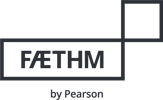By Jessica Brown, Director of Partnerships, Americas Digital transformation accelerates existing...
Predicting future hiring, diversity, and retention trends
As an HR leader, workforce planning technology can help you understand how to recruit, retain, and forecast talent needs. Workforce planning software can also improve your decisions on workforce diversity, employee retention, and talent acquisition. It's hard to overstate the importance of having a modern HR tech stack that uses the latest tools available to optimize recruiting and hiring while improving retention rates. In this article, we'll explore what workforce planning software is and how businesses can get started implementing it in their own environment.
HR workforce planning in action
HR workforce planning technology helps HR leaders better recruit, retain and forecast talent needs
-
Improve decisions on workforce diversity, employee retention, and talent acquisition
-
Enhance visibility into your organization's workforce data
What is workforce planning and why is it important?
Workforce planning is a strategic process that helps HR leaders make better decisions on workforce diversity, employee retention and talent acquisition. Workforce planning is a critical component of the talent acquisition process.
Why you need workforce planning technology
-
To make better decisions
-
To make better decisions faster
-
To make better decisions more accurately
-
To make better decisions more consistently, and in a way that's repeatable and sustainable over time (think: employee onboarding)
-
To make better decisions more efficiently so as to have more time to spend on other HR-related tasks (such as compensation analysis)
-
To make better decisions that are actionable and trackable so they can be measured against goals set out by senior management or the C-suite; this helps organizations improve both their business results and their employees' experience at work
Workforce planning technology can help you conduct data-driven analysis of key trends in employee demographics or skill sets. It'll also enable you to identify potential risks associated with those trends before they become actual problems; Perhaps most importantly — workforce planning software will enable your company's leadership team members answer this question: "What do we need from our people now? Is it skillsets A through F? Or is it something else entirely?"
What features are available from workforce planning software?
Workforce planning software can help HR leaders better recruit, retain, and forecast talent needs. In addition to helping you understand your organization's current workforce profile (who works in your company), workforce planning software also helps you plan for future hiring needs.
Using a workforce planning tool—which is typically cloud-based—to gather data about your organization’s current work force is key to building a successful recruiting strategy. This information can include:
-
Employee demographics – such as age range, gender breakdown, length of service and other variables relevant for use in recruitment advertising targeting decisions
-
Job titles/roles – as well as skills required for each role; this will enable the development of appropriate person specifications for each position being recruited for
How to choose workforce planning software
When choosing workforce planning software, there are a number of factors to consider.
Here's a quick guide that will help you get started:
-
Consider your current internal technology environment. Do you have a robust HRIS solution in place? If not, how much work would it take to integrate the workforce planning software?
-
Gather the right data, and make sure it's reliable. Without accurate information about your organization's people and their skillsets, staffing levels or other relevant attributes, workforce planning solutions won't be able to offer useful insights or suggestions. This can also be challenging if some departments aren't using an integrated HRIS system yet—or if they're stuck on older systems with limited functionality.
-
Make the purchase decision with a clear cost benefit analysis in mind. Workforce planning technologies vary widely in terms of ease-of-use and functionality (for example, some products are designed for large enterprises while others are intended for midsize organizations). Some products come with additional services like coaching or training programs; others may require third party integrations like financial reporting tools.
Define your use case
As the first step in technology selection, it's important to define your use case before you start looking at options. A use case is a problem or need that you want to solve through technology—it could include how you hire new talent, retain current employees, forecast future hiring needs based on past performance data, etc.
Consider your internal tech environment
Before you begin the process of selecting a workforce planning solution, consider your internal technology environment. The right HRIS solutions can help to ensure that your organization is leveraging best-in-class technology while also creating efficiencies within your business.
When evaluating a potential HR workforce planning solution, ask yourself: What is our current technology stack? Do we have an in-house IT team or do we look outside for support? How expert are they at building custom applications or integrating new technologies?
What skills do my existing HR professionals have? Do I need consultants or specialists who can provide training on an ongoing basis?
Gather the right data, and make sure it's reliable
The third step in the process of HR workforce planning is to gather and analyze the right data.
You need reliable information about your talent pipeline, so you can make informed decisions about how many employees you need to hire and retain. You also need reliable information about the future demand for your products and services, so you know how much of a head start on hiring you will need.
Make the purchase decision with a clear cost benefit analysis in mind
-
Develop a clear cost benefit analysis. When determining whether or not to invest in workforce planning software, it's important to consider the cost of this technology against its benefits.
-
The cost of workforce planning software is generally low and often considered a one-time expense that can be easily absorbed into your company's budget.
-
In contrast, the benefits of workforce planning software are long-term and ongoing: You'll be able to better recruit, retain, and forecast talent needs for years after making your purchase.
Workforce planning technology helps HR leaders better recruit, retain and forecast talent needs by improving decisions on workforce diversity, employee retention and talent acquisition.
A comprehensive workforce planning solution integrates with your existing HRIS to provide a powerful set of tools to support your business strategy from initial hiring through ongoing employee engagement. By equipping you with the right information at the right time, this software can help you make smarter decisions about where to invest in recruiting efforts, how best to manage your contingent workforce (including contractors), what new hires are likely to contribute most immediately versus those who need more time before they hit their stride—and much more.
Workforce planning software helps you meet your business' needs by offering functionality that allows you to analyze your current workforce's demographics and predict future hiring, diversity, and retention trends. It gives managers an actionable way to prepare for what's coming next.


-1.png?height=200&name=e6368bcf-62d7-4808-bc95-960523f27fe8_Faethm%20AI%20page%20banner%20(1)-1.png)
